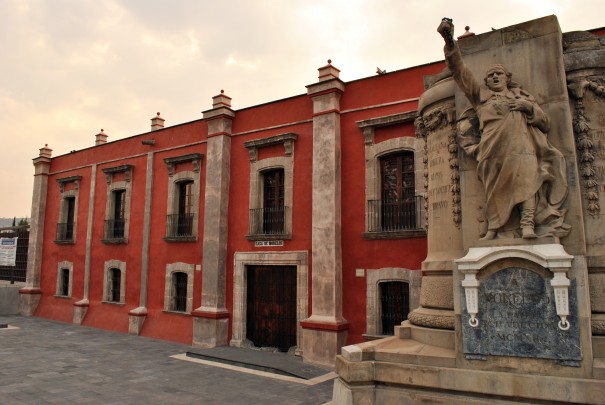INAH Museums Network
9 Museums
Community center
The former residence of the Viceroys—Bucareli and others were received here—José María Morelos was taken from here to be shot in 1815. It houses a rich collection of articles referring to the national hero. The upper floors are used for temporary exhibitions. Also on exhibition are some important mammoth bones.
Estado de México
Archeological site
Located at one of Mexico’s most important archeological sites, this museum displays more than 600 objects made from stone, wood, bone, shell, and obsidian from over the ten centuries the city lasted. The final “exhibit” is none other than the Pyramid of the Sun itself, framed in a great picture window.
Estado de México
Archeological site
The monuments at Teotihuacan were once decorated with colourful murals. Samples of these are to be found in this museum, together with an explanation of the techniques used and other related objects. There is also a provisional explanation of the script.
Estado de México
Archeological site
Display on the development of the region, beginning with the discovery of 10,000-year-old Chimalhuacan Man and up until its subordination to Texcoco, of the Triple Alliance, together with Tlacopan and Tenochtitlan.
Estado de México
Archeological site
This late-eighteenth-century retreat for the pulque magnates of Tlalnepantla now displays Mexica stone sculptures and pottery depicting nature, men and the gods, all within the setting of a stately residence.
Estado de México
Archeological site
The first Chichimec city in the Valley of Mexico, before they settled in Texcoco. An impressive pyramid has two temples on the top dedicated to Tlaloc and Huitzilopochtli, inspired by the great Teocalli of Tenochtitlan. The museum reconstructs the city and narrates its history from the twelfth century A.D.
Estado de México
Archeological site
In 1947 the bones of the Man of Tepexpan were discovered, at that time the most ancient in Middle America (7,000 years old). The site has numerous remains of the period: prehistoric animal bones and stone tools on exhibition in the museum, together with a collection of ancient skulls.
Estado de México
Nacional
The finest examples of the visual arts from New Spain over the three centuries of its existence, exhibited in a splendid building from this period: the Jesuit College in Tepotzotlán, which provides a brilliant, detailed journey through the viceregal period.
Estado de México
Local
This museum—housed in a large Augustinian construction built near Teotihuacan in a Plateresque and Gothic style, dating back to 1539—has an invaluable set of very early murals and impressive cloisters. The collection includes pre-Hispanic objects, as well as religious paintings and sculptures from the viceregal period.
Estado de México














